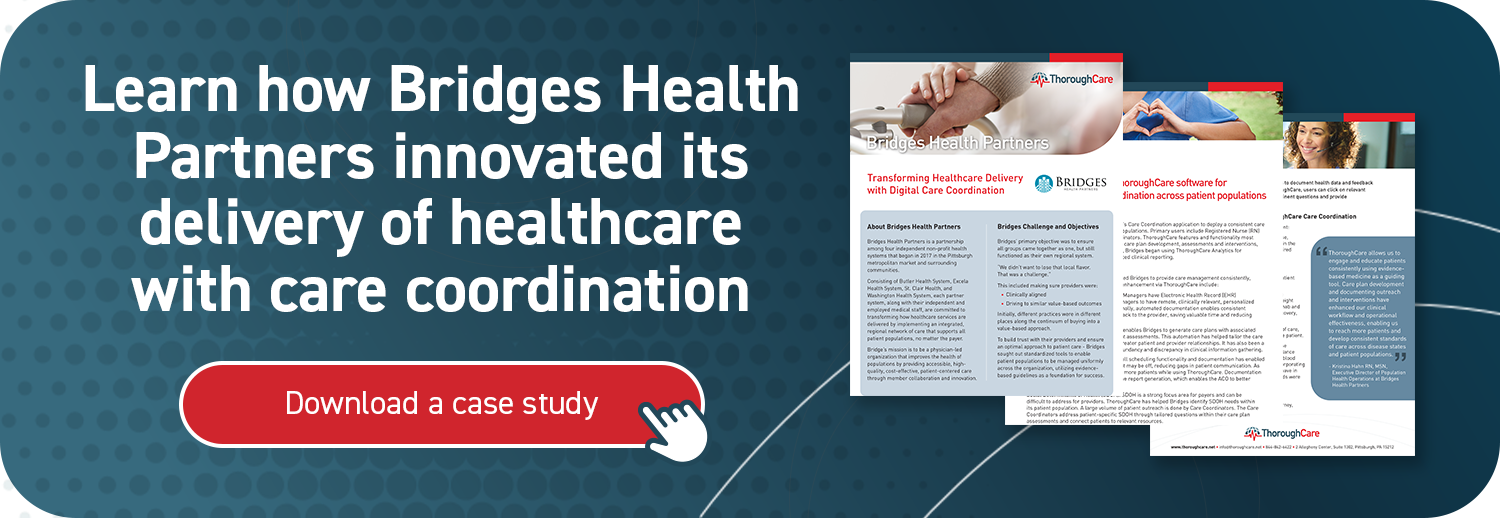Chronic Care Management | RHCs / FQHCs
Rural Healthcare Quality Can Benefit from Chronic Care Management
Rural healthcare has existed outside the influence of many value-based programs. With low case rates and specialized reimbursements, rural care clinics have not been folded into the transition.
However, new efforts are underway to develop appropriate performance measures for rural healthcare organizations.
This data could also be used for strategic planning, value-based care arrangements, or voluntary and increasingly-required reporting.
Chronic Care Management (CCM), a Medicare preventive health program, provides the opportunity to not only address gaps in care but improve performance measures.
Rural quality improvement programs
Certain rural healthcare facilities, such as Critical Access Hospitals (CAHs), Rural Health Clinics (RHCs), and Federally Qualified Health Centers (FQHCs), are reimbursed differently than Prospective Payment System (PPS) hospitals.
This, coupled with low case rates, has excluded them from most federal value-based care programs.
Facilities that the Centers for Medicare & Medicaid Services (CMS) don’t require to report quality data will most likely need to do so in the future, particularly as Medicare and Medicaid push for value-based reimbursement models.
But, because addressing the challenges to rural healthcare is a national priority, CMS funded the National Quality Forum (NQF) to work with the Rural Health Advisory Group to create a new set of vital rural measures.
Published in 2022, the NQF workgroup created a list of 37 quality metrics, including 21 measures for hospitals and 16 measures for ambulatory care settings. These performance metrics are scientifically validated and curated to address the unique conditions and priorities found in rural communities.
Overall measures for rural healthcare providers
A core set of performance metrics could make performance tracking and reporting more accessible.
The initial measures presented by the NQF are not condition-specific or procedure-specific; they are resistant to low-case volume and address critical issues, such as care transitions and chronic disease management.
Additionally, the latest version from the workgroup, titled 2022 Key Rural Measures: An Updated List of Measures to Advance Rural Health Priorities, focuses on rural priorities, including:
- Mental health
- Substance abuse
- Medication reconciliation
- Diabetes, hypertension, and chronic obstructive pulmonary disease
- Hospital readmissions
- Perinatal and pediatric conditions and services
- Telehealth
- Healthcare systems readiness
Many of the ambulatory measures focus on preventive and chronic disease management.
More than 22% of rural residents live with two or more chronic diseases compared to 18.9% in urban areas. Rural areas also tend to have higher rates of many of the most prevalent chronic diseases, such as high cholesterol, high blood pressure, and arthritis.
How chronic disease management increases quality
CCM programs can directly influence and support quality improvement efforts, leading to better health outcomes and performance measures, as well as value- or performance-related financial incentives.
Research shows CCM can measurably impact quality and create a foundation for many value- and team-based initiatives. In these arrangements, providers are reimbursed based on delivering high-quality care in a cost-effective manner.
For rural communities, a CCM program can capitalize on providers’ strengths in nurturing personal relationships and maximizing limited resources. They can leverage close ties to the community and collaborate toward quality improvement efforts.
Studies have highlighted specific ways that CCM can enhance care quality, including:
- Improved patient self-management
- Increased interdisciplinary and team coordination
- Decreased healthcare utilization like hospital admissions/readmissions and emergency room visits
- Providers can focus more on identifying and addressing patients’ health goals and care preferences
- Improves routine screening and preventative treatment rates
- Better coordination of care transitions
- Improved clinician and service satisfaction surveys
- Better understanding of recommended therapies and adherence
CCM can also save costs. In the first year of offering CCM coverage, Medicare saved $88 million from decreased utilization.
Examples of programs that positively impact health outcomes
There are many chronic care management success stories, but these two highlight the potential for rural communities.
CCM in West Virginia: A chronic care management program was so successful that it was scaled to three states, including 11 FQHCs and three rural hospitals. This program leveraged community health workers (CHWs) to support patients living with diabetes and achieved improved health, including:
- 63% achieved a lowered HbA1c with a mean decrease of 2.4 percentage points
- 21.5% decreased their HbA1c below 10%
- 22% decrease in emergency room visits
- 30% decrease in hospitalizations
- Annual cost savings of $384,000
CCM in Nebraska: The Howard County Medical Center is a 10-bed CAH with two RHCs, only five physicians, and four physician’s assistants to cover a five-county area. They created a traditional CCM program that grew from less than 20 patients to nearly 150 in a little over a year. The CCM program not only helped decrease hospitalizations and ER visits, but it achieved 68% blood pressure control within two years.
In 2022, the Howard County CCM program delivered nearly $237,000 in revenue, enabling the team to use existing staff more efficiently, as well as funding a community wellness center. Howard County plans to expand through partnerships with commercial health plans.
Leveraging CCM to improve quality measures
Research has revealed several characteristics of successful chronic care management programs, particularly for rural healthcare provider organizations.
The following themes reflect how rural CCM programs can tap into tight-knit communities:
- Engage self-management activities and education
- Consider starting groups for peer-to-peer support
- Maximize nurse coordinators and community health workers as critical frontline relationships
- Set up digital tools that support streamlined interdisciplinary communication, commitment, and patient referrals
- Invite involvement from family, friends, and caregivers who can support the patient’s goals
- Use SMART Goals to co-create patient goals that are realistic and actionable
An excellent resource for starting a chronic care management program is a CMS FAQ, titled “Care Management Services in Rural Health Clinics (RHCs) and Federally Qualified Health Centers (FQHCs).”
Chronic care management directly supports improved quality and performance measures
Launching a CCM program can optimize clinical staff time while helping patients improve their health when outside the clinic. It also supports a new revenue stream while preserving hospital and ER resources for higher-risk patients.
Lastly, CCM can be foundational to improving quality and achieving better outcomes, leading to future compliance and reimbursement incentives through value-based care.
How ThoroughCare supports rural healthcare providers
ThoroughCare’s intuitive software platform can help rural hospitals, health clinics, and providers collaborate and deliver digital care coordination and chronic care management. ThoroughCare can:
- Streamline the creation of patient care plans
- Use SMART Goals to measure individualized progress
- Support staff workflows with guided, validated assessments
- Help motivate patients through clinical recommendations
- Analyze patient risk factors and generate clinical recommendations
- Identify behavioral health conditions
- Track and log services for an audit-proof record of care
Additionally, ThoroughCare supports comprehensive integration with leading EHRs, health information exchanges, remote devices, and advance care plans. ThoroughCare Analytics visualizes and helps interpret patient and operational data.




